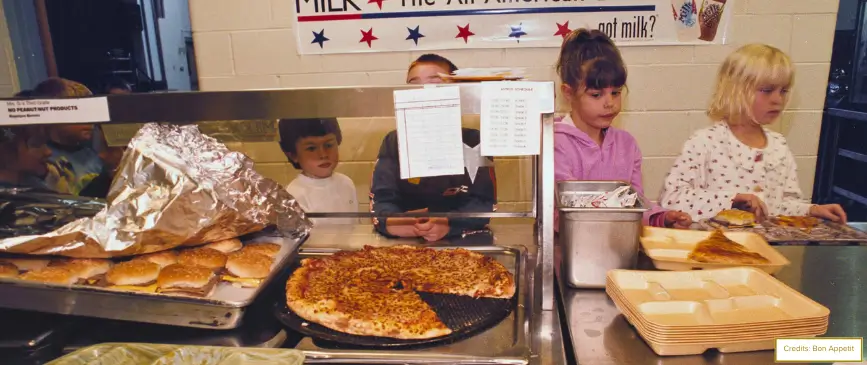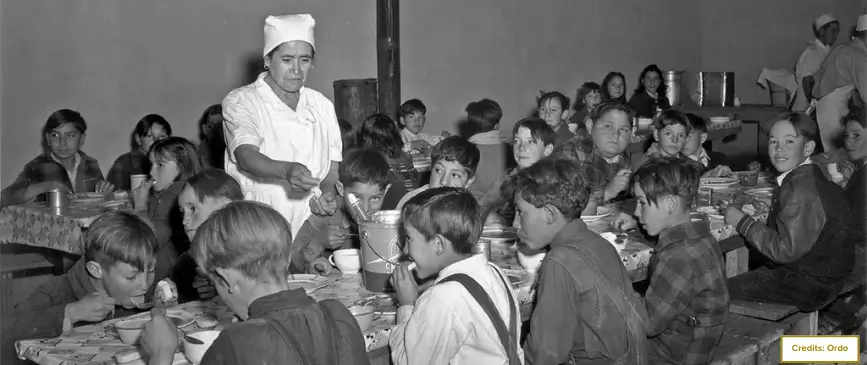Introduction
Think back to your school cafeteria days as a kid where you wanted to be for the friends, the lively atmosphere, games, and even the food, right?
That’s what draws students to the cafeteria now, too.
Labeled a fun place for them, the school cafeteria impacts their growth, development, personality, and mindset. That’s why designing the cafeteria needs a thoughtful approach, including planning, layout, and decoration.
Let us take you to a catch back must things you should consider before setting up an elementary school cafeteria.
Designing An Elementary School Cafeteria – Factors To Consider
Designing an elementary school cafeteria is creating a place that feels like an extension of the classroom, where kids can simply be kids.
From years of building K-12 environments, we know that starting with a well-considered checklist is essential.
Here’s a breakdown of factors we believe are essential in creating a safe, functional, and inviting cafeteria space that students will love.
· Students Age
When thinking about elementary school cafeteria design, the first thing to consider is the age of your students. With kids aged 5 to 13 using the space every day, safety and accessibility are very important. A flexible layout that matches their energy and curiosity will help create a safe and friendly environment.
· Grade Levels
Elementary classes go from kindergarten to fifth. And since these kids are growing, exploring, and learning it’s essential that your cafeteria can meet the different needs of students at various ages. Therefore, considering flexibility the key here.
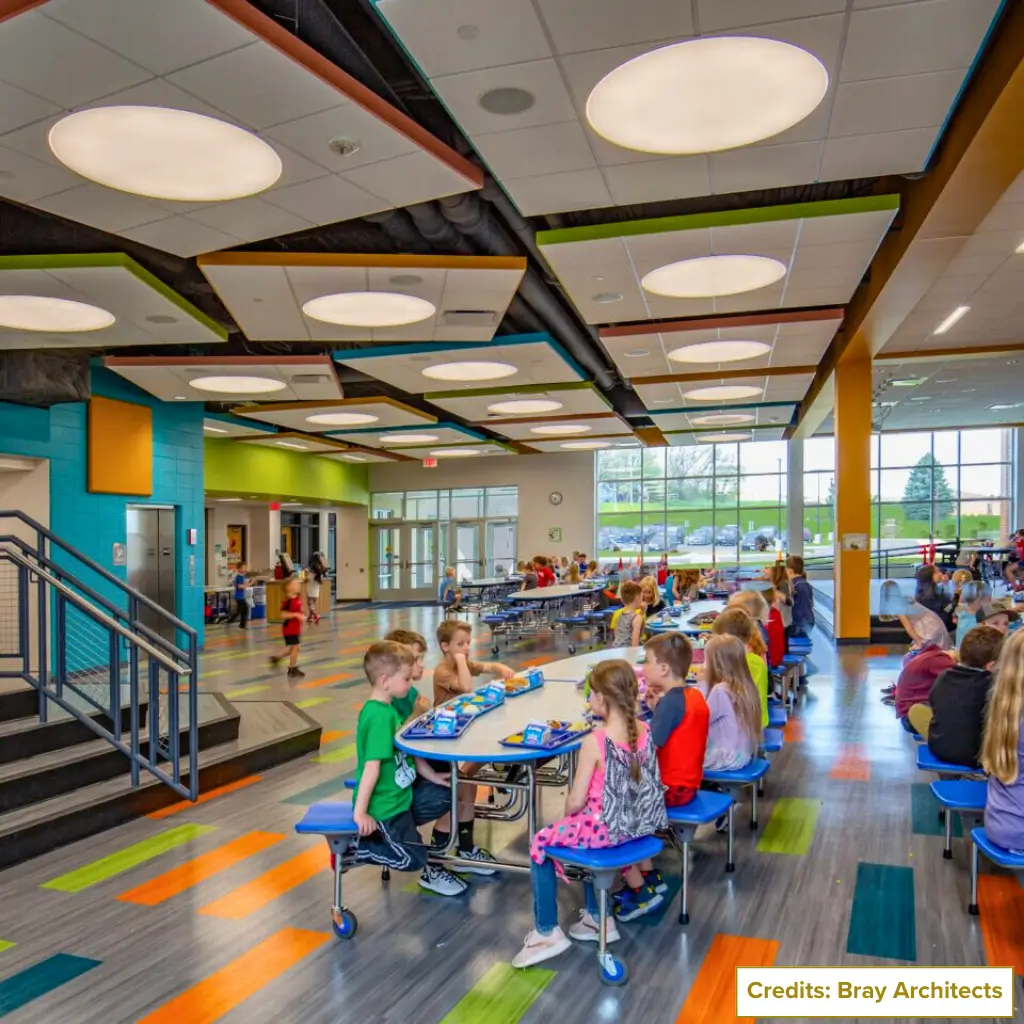
· Capacity and Flow of Students
Considering how students move through the cafeteria is crucial. A cafeteria should feel spacious and flow naturally, allowing students to move safely and comfortably. Plan for peak times and make sure tables and chairs can fold up or move easily, especially if the cafeteria doubles as a space for events or activities.
· Space Calculation
Space planning is an important part of designing an elementary school cafeteria. Make sure to take accurate measurements to figure out how many seats you need and leave room for growth if more students come in the future. Don’t forget to include storage solutions for furniture and equipment to keep everything tidy.
· Budget
It’s important to set a good budget to bring your cafeteria vision to life. Even though academics usually get the most funding, the cafeteria also deserves a fair share. Setting an effective budget will give you flexibility for maintenance and periodic upgrades avoid frequent repairs, saving money in the long run.
· School Representation
Another key factor in designing an elementary school cafeteria is to reflect your school’s values and spirit. A themed cafeteria can lift kids’ spirits and attract parents and visitors, creating a positive school culture.
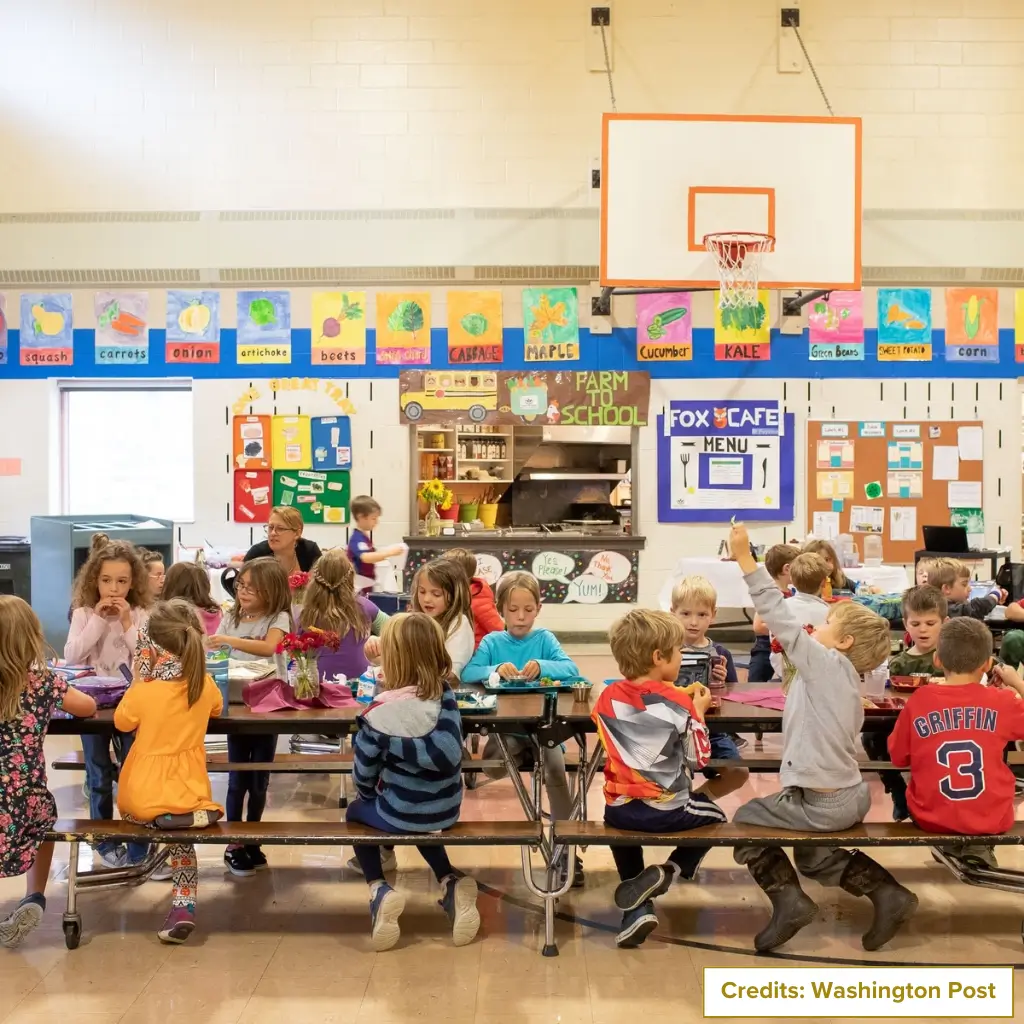
· Professional Expertise
Don’t overlook the value of getting professional help. Talking to architects and designers who know about educational spaces can give you useful advice, making sure your cafeteria meets practical needs while looking great.
Want all in one guidance? Hire our cafeteria graphics services today.
Designing An Elementary School Cafeteria –Five Phases
Designing an elementary school cafeteria involves several crucial phases. Here are those:
1. Planning phase
· Seating Options
One significant aspect of planning is exploring seating types. Flexible and modular seating arrangements can accommodate elementary levels while bench seating is a common choice. It’s essential to plan age-appropriate seating; for younger students aged 5-7, lower seats work best, whereas older children may benefit from foldable options.
· Types of Tables and Sizes
Select tables that are durable, easy to clean, and appropriately sized for various age groups. Rectangular tables are the most common; however, round and oval tables can provide aesthetic appeal and foster interaction among students.
Suggested Reading: Types of Tables for School Cafeteria.
· Seating Arrangement and Flow
Optimize seating for supervision and ease of movement. Distinct zones for eating, socializing, and quiet activities can help manage student behavior effectively. Especially if assigned seating is implemented for second and third graders it can foster a sense of professionalism among students.
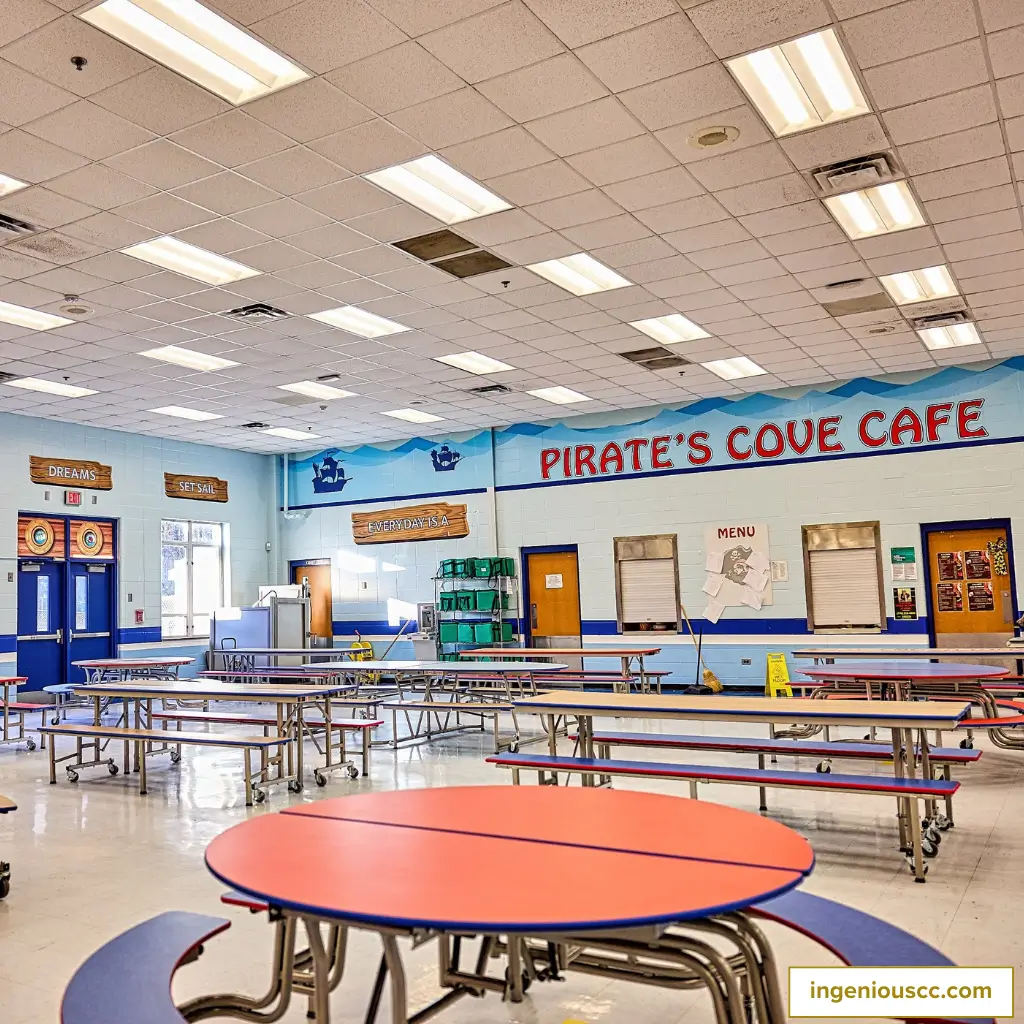
· Bulletin Board and Display Area Placement
Fix out the space for a cafeteria bulletin board is vital as well, serving as a lively display for announcements and student achievements.
· Cafeteria Counter Design
One important element of planning include adjustable counter heights and clear signage for ease of use. Ample space is necessary for students to flow smoothly when getting lunches. Hence, visualize and make necessary adjustments while implementations to reduce chaos in order to make cafeteria staff manage counter lines effectively.
· Lighting Plan
Ensure the cafeteria benefits from natural light, task lighting, and ambient lighting. A bright, airy space enhances the dining experience and promotes student well-being.
· Sound Control
Plan for sound-dampening materials on ceilings or walls to reduce noise levels in the busy cafeteria environment, creating a more pleasant atmosphere for students.
· Waste and Recycling Stations
While designing elementary school cafeteria planning on waste and recycling stations strategically is also important. This will reduce food wastage and promote environmentally conscious habits among students, ensuring a sustainable future.
2. Implementation phase
· Construction and Installation
As you take on the implementation phase of managing a school cafeteria begin with the build-out of the layout, which includes the installation of walls, counters, and seating. Prioritize durability and stability to withstand the daily demands of a busy elementary school cafeteria design.
· Furniture Assembly and Placement
Next set up the furniture. Put up tables, chairs, and other seating arrangements according to the finalized plan. For example, place 8 round tables in a circular pattern for students to move around comfortably or surround each table with 4-6 chairs, depending on the table size for easy conversation and collaboration.
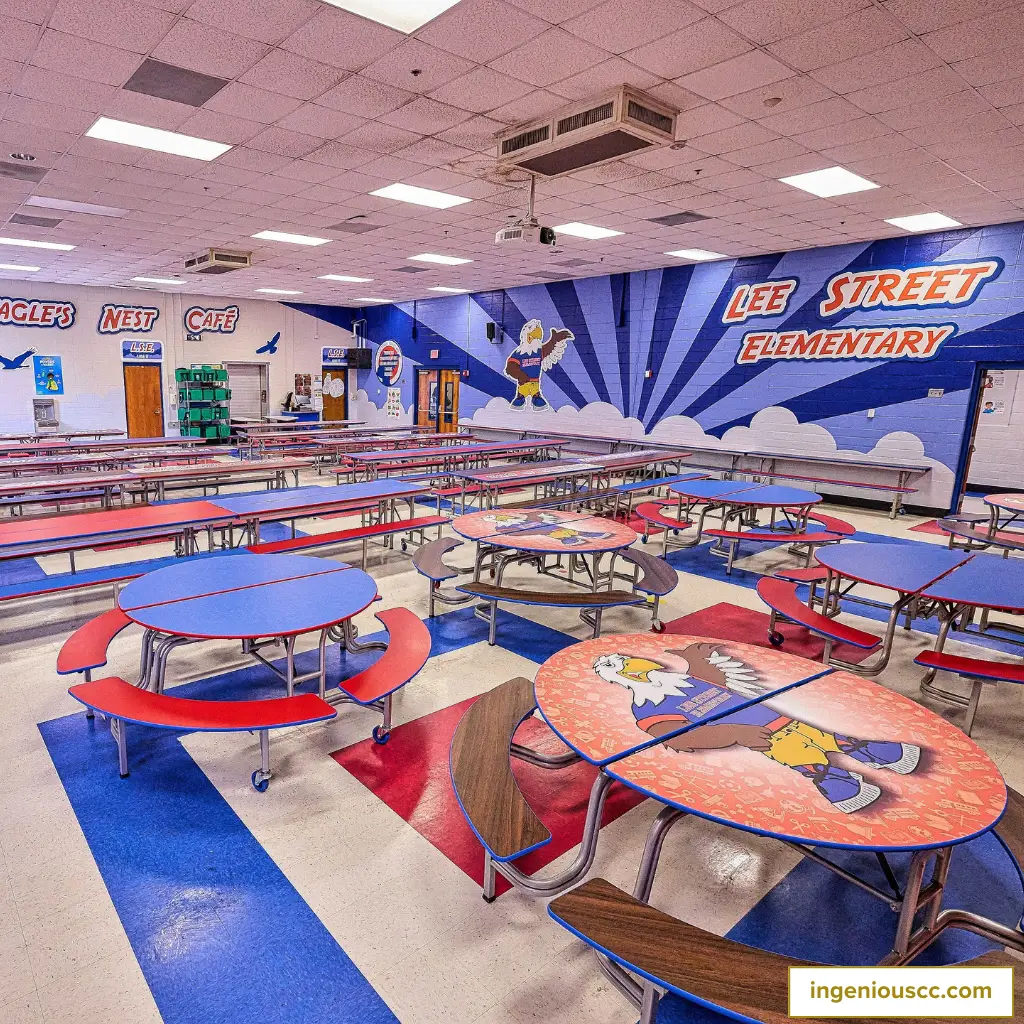
· Lighting, Sound-Proofing and Electrical Setup
Install lighting along with necessary power outlets for digital displays or appliances. Similarly, incorporate carpet tiles or acoustic panels with bright colors and fun designs to dampen noise.
· Safety and Accessibility Measures
Implement clear signage, emergency exits, and ADA-compliant ramps to ensure safety and accessibility for all students. For example, colorful, illustrated signs can guide younger students to exits and restrooms, helping them navigate the space confidently.
· Cleaning and Sanitization Protocols
Establish a cleaning schedule and hygiene stations to uphold high health standards, crucial for the well-being of students. For example, placing hand sanitizing stations at entrances and throughout the cafeteria with cleaning routines should be prioritized to facilitate a healthy eating environment in the elementary school cafeteria design.
3. Decoration phase
· Color Scheme and Theme
For the phase 3, decorating school cafeteria focus on creating a cheerful, engaging space. Use vibrant colors that promote both focus and relaxation. Use educational themes, like nature or space, to spark curiosity while adding visual appeal
· Wall Murals and Art
One good décor idea is to create a school cafeteria wall art that blend decoration with learning. Think about themes like animals, outer space, or nature scenes that spark curiosity while providing visual enjoyment. These wall pieces can even support lessons or school themes, giving students something interesting to look at and discuss.
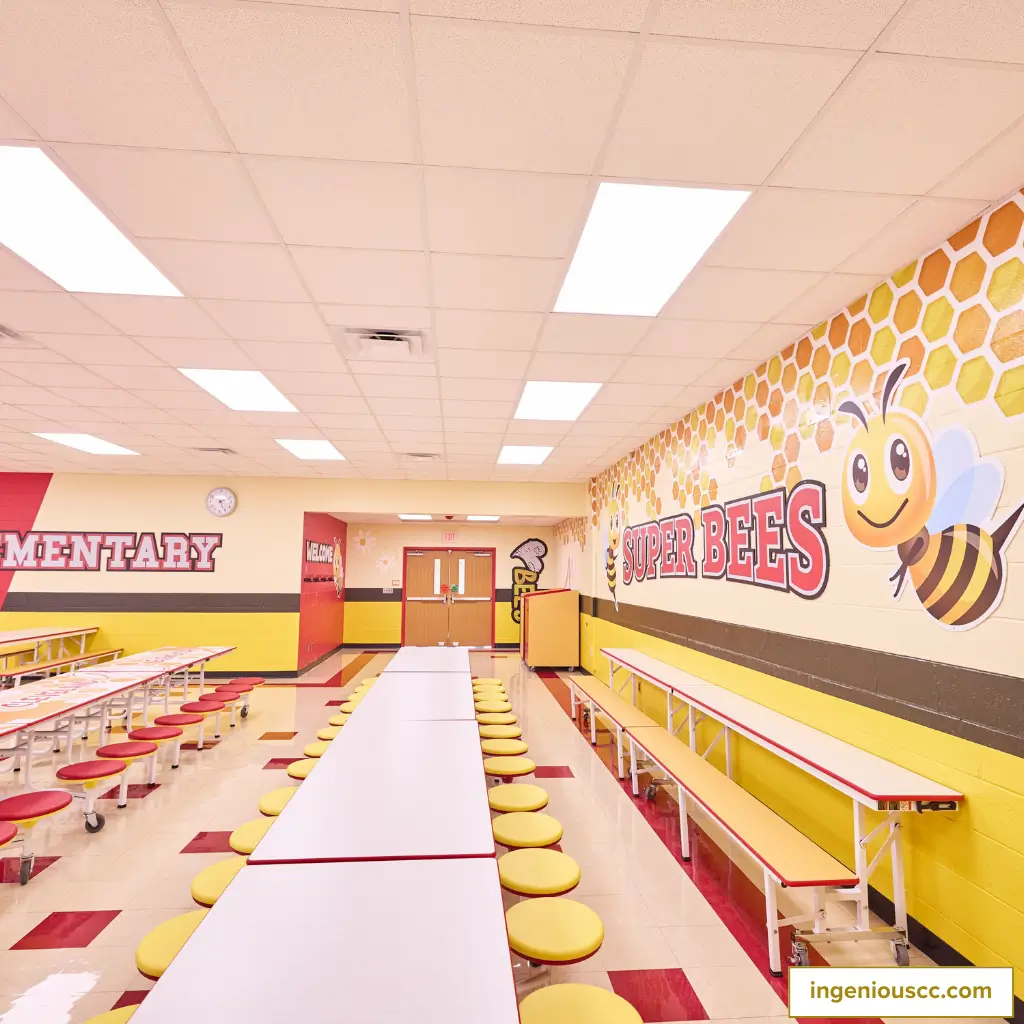
· Interactive Displays for Students
Create chalkboards or message boards as interactive spaces where students can share ideas or see daily reminders. This area can also feature school cafeteria elementary rules in a friendly, colorful format, making it easy for students to remember.
· Seasonal and Rotating Decorations
Introduce seasonal decorations to celebrate special occasions. For instance, a school cafeteria Halloween decoration could include friendly ghosts and pumpkins, while a school cafeteria Christmas decoration could feature festive banners, snowflakes.
· Motivational Messages and Fun Facts
Post short quotes like “Be Kind, Be Safe” or “Did You Know? Apples Give You Energy!” to inspire kids and make learning fun during lunch. You can also use these messages to let little minds adopt healthy habits.
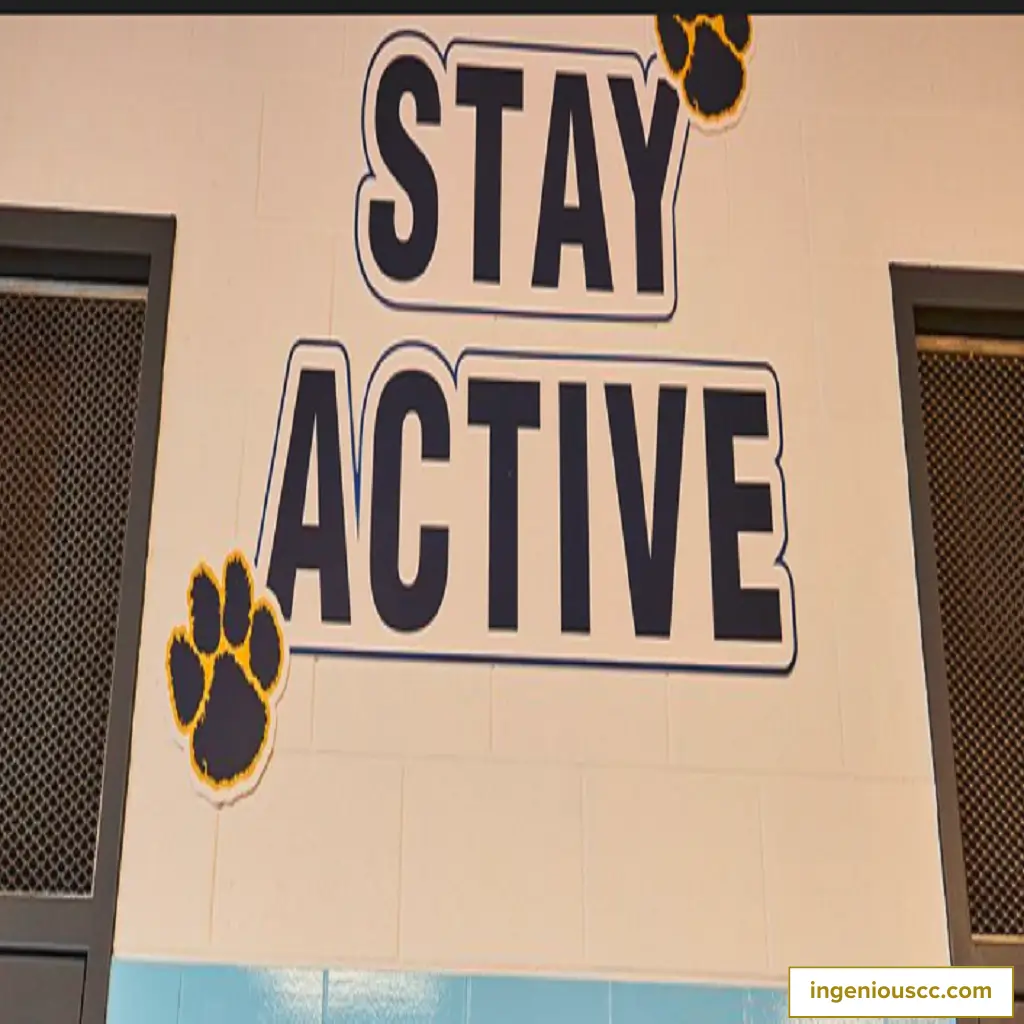
Want to know more great ideas? Scroll our guide School Cafeteria Decoration Ideas for Elementary School.
4. Student Feedbacks
The fourth phase of elementary school cafeteria design is to take a student survey and gather feedback on cafeteria. The good idea is to conduct a fun survey to gather students’ ideas on themes, seating, and menus before starting a design. This will help you in knowing what they want and cherish. You can even conduct a poll afterward to take their input which can result in strengthening their connection to school.
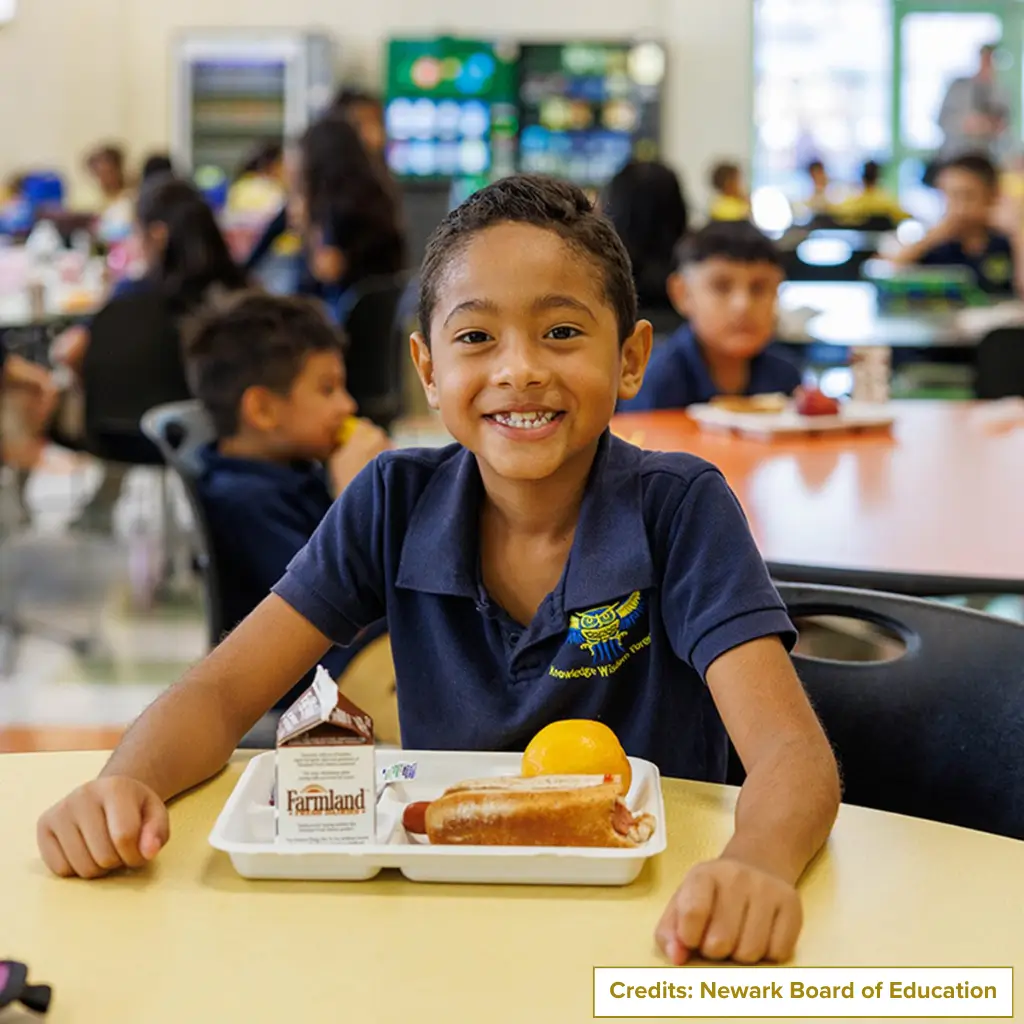
5. Cafeteria Activities and Events
Finally continue designing an outstanding cafeteria with each month with little fun events, lunch times and games. They will keep them more engaged with school and make them coming with great minds and happy hearts.
Need Cafeteria Experts Help? Connect With Us at ICC
At Ingenious Culinary Concept we love decorating school cafeterias. With years of experience and a creative approach, our leader Kern Halls ensures each cafeteria reflects the heart and vibe of its school community.
If you’re ready to see your elementary school cafeteria transformed with a personal touch, we’d love to craft a custom quote just for you. Simply fill out our form and while you wait to hear back, dive into our portfolio by CLICKING HERE to see some of our favorite transformations
FAQs
How long does it take to install an elementary school cafeteria?
The planning phase can take 2-3 months, while construction and installation typically last 2-4 months, with additional time needed for final setup and testing.
What is the cost of installing a school cafeteria?
A standard elementary cafeteria project can range from $100,000 to $300,000, depending on the choice of materials, furniture, and professional fees.
What should be considered in the layout of a cafeteria?
The layout should ensure smooth traffic flow, create designated seating zones for various activities, and include flexible arrangements for multi-use purposes to maximize space and efficiency.

